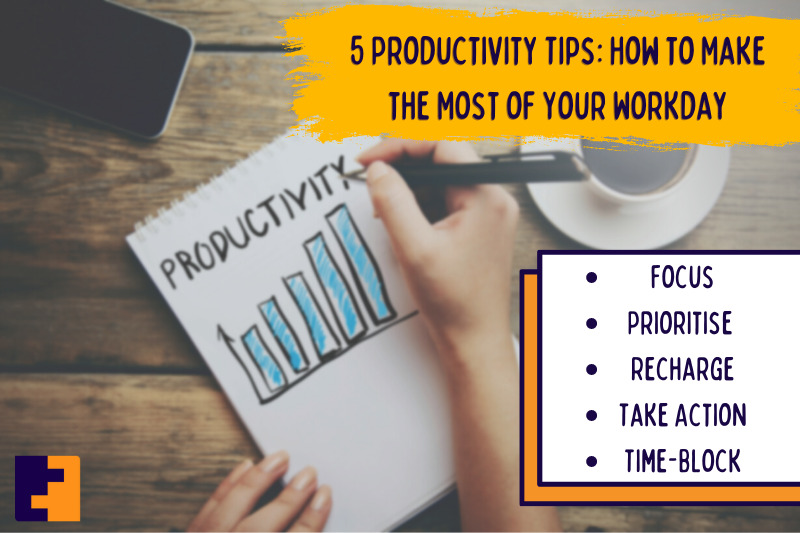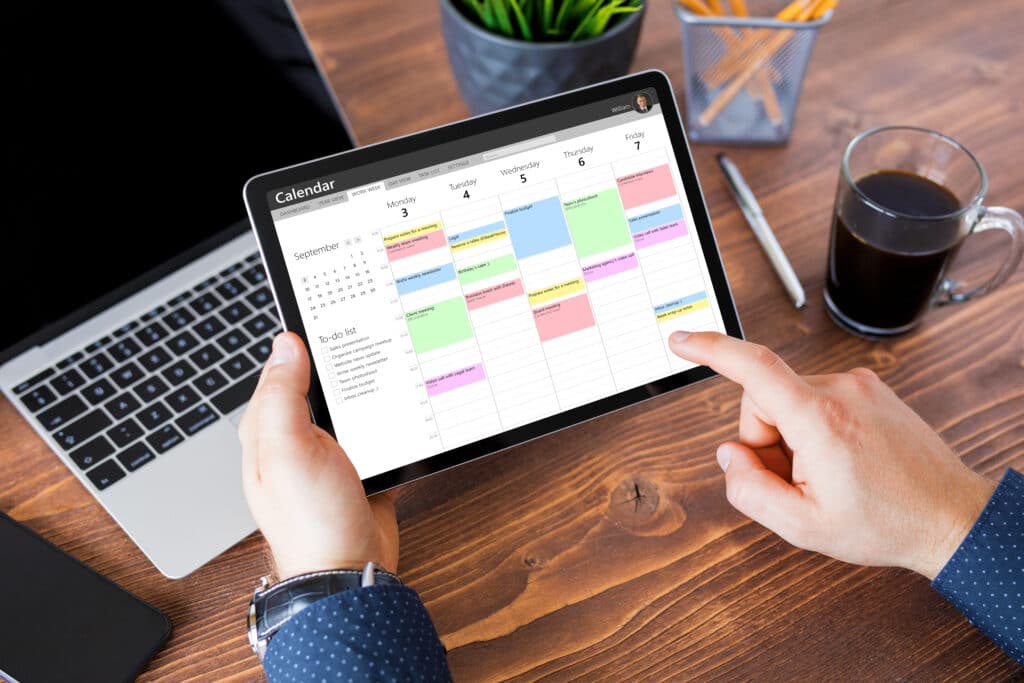5 Productivity Tips: How to Make the Most of Your Workday

“If there are nine rabbits on the ground, if you want to catch one, just focus on one.” – Jack Ma. It’s probably one of the most concise statements about productivity. Jack Ma, the founder of Alibaba and AliExpress, is one of the wealthiest people in the world, so it’s no coincidence that he said that. He didn’t get to where he is today by being a slacker. Don’t you think?
Given this, we can assume that your presence here indicates a lack of productivity-improving abilities.
You probably begin each day intending to accomplish a great deal, but you soon find yourself getting sidetracked, wasting time on unimportant tasks, or simply procrastinating? Lunch time, switching meetings, following never-ending to-do lists, and the workday still feels too short.
But we’re not here to pass judgement! Everyone’s been there. The key is not to complain about it but to find a way to deal with it.
So, if you want to learn how to become the most productive version of yourself, we’ve got you covered! Buckle up because we’re about to embark on a productivity trip!
How to Become More Productive at Work
It’s no secret that people adept in time management and organisation are often more productive. So if you too want to increase your work efficiency, there are a few tricks and organisational methods we’ll teach you today, starting with:
Tip #1: Focus only on one task at a time
If you dedicate all your attention to more than one task simultaneously, you will most likely achieve the opposite effect. Instead of working faster and completing tasks one after one, you will struggle to manage your time to switch between them. Which will only harm the quality of your work or leave it incomplete.
Let’s go back to the meaning of Ma’s catching rabbits quote: The more rabbits you try to catch at once, the less you actually will. It’s the same with everyday work tasks – the more you try to juggle, the more likely you will fail at executing them. Instead, focus on one task at a time. And when you finish it, you can begin with the next one.
Tip #2: Prioritise tasks by order of importance
To get everything done on time and qualitatively, it’s important to set priorities and stick to them. Prioritisation is critical because it lets you concentrate first on the most essential and time-sensitive issues, allowing you to return to the less urgent ones later.
If you’re a multitasker, you probably often take over more tasks than you can accomplish. We advise prioritising projects in order of importance to make things easier for you – start with the most difficult assignments and end the workday with lighter ones.
Additionally, completing assignments in a well-defined order can significantly improve your results and work efficiency. That way, if you fail to finish all your tasks by the end of the day, you won’t have to worry about the urgent ones, as they’ll be out of your to-do list.
Tip #3: Take frequent breaks to recharge
Depending on the type of person you are – it could be really tempting to take a break every 10 minutes, or it could be the other way around – avoid taking a break so you can finish your tasks faster.
Well, we hate to break it to you, but neither of these two methods works or helps your productivity. Here’s something to consider instead:
The 50/10 Rule. Give yourself a 10-minute break for every 50 minutes of concentrated work. It’s a good idea to take a break every hour to minimise burnout, reduce distractions, and allow you to absorb new information more effectively.
Time management is integral to becoming more effective at work, and this strategy may help you do so. It allows for more uninterrupted work and then a short break to recharge before returning to the task to finish it.
Tip #4: Follow the two-minute action rule
David Allen, an American productivity consultant, introduced the two-minute rule in Getting Things Done: “If an action will take less than two minutes, it should be done at the moment it’s defined.”
So, this principle means embarking on “two-minute or fewer” tasks, which you’ve been meaning to do but “didn’t have the time.” Doing them quickly (each for 2 minutes) will check them one by one off your to-do list.
For example, sometimes you need just two minutes to keep track of the tasks you have for the day, send or reply to an email, talk to a colleague about something important, or write down a note. Still, those two minutes may add to improved productivity and a completed list of assignments at the end of the workday.
Tip #5: Employ the time-blocking method
While limiting oneself to certain hours or minutes may seem restricting and uncreative, you’re more likely to get a lot done and increase productivity. This is called time-blocking and it looks like this:
- 9AM – 11 AM – Answering emails
- 11 AM – 12 PM – Working on reports
- 12 PM – 1 PM – Lunch break
- 1 PM – 2 PM – Read ****
- 2 PM – 3 PM – Write ****
Of course, this is just an example. You can organise time slots and tasks any way you see fit that best works for you. You’ll also have less time for indecision or procrastination and more time to focus on the task at hand if you establish routines and habits.
The time-blocking strategy allocates each time to a specific task or tasks. It can also keep you focused and let you know if you’re being unrealistic about your time or daily objectives.

Takeaway
To maximise each workday, you must make a deliberate effort and improving your productivity is a great place to start. Set clear objectives, be realistic about your time, write down important notes, take regular breaks, and ensure everything you do is a worthwhile use of your time.
Finally and most importantly – don’t set unclear expectations or an immense workload for yourself, as that’s the fastest way to a burnout. It takes effort and fine-tuning, but if you persist, you will soon be able to do more in less time and become the most productive version of yourself.
And remember – don’t be busy, be productive!
